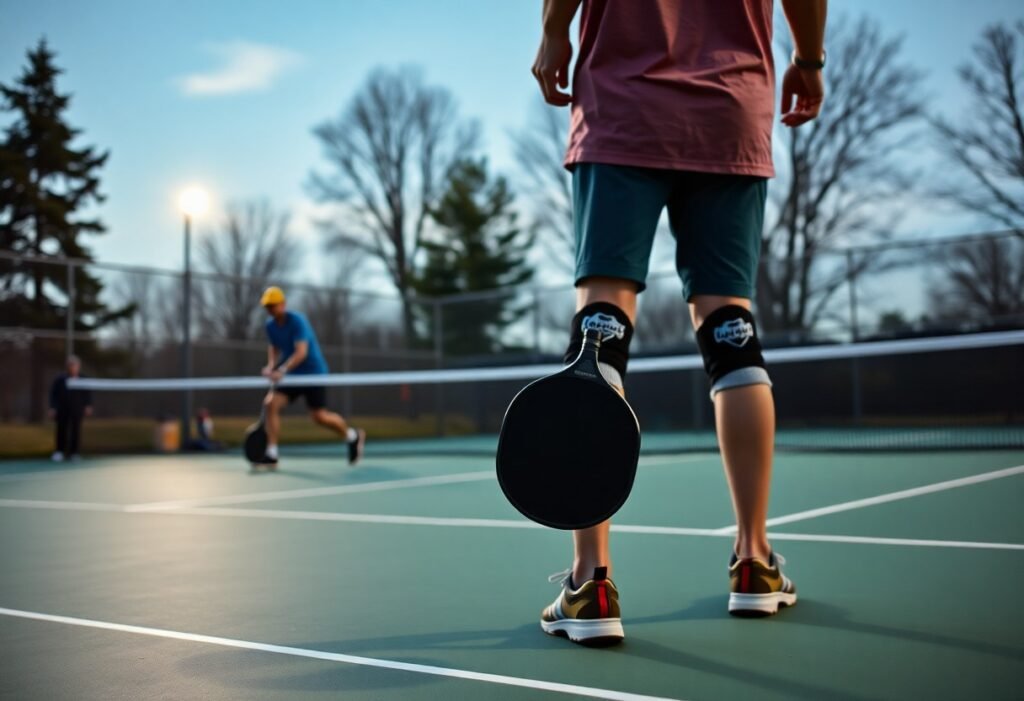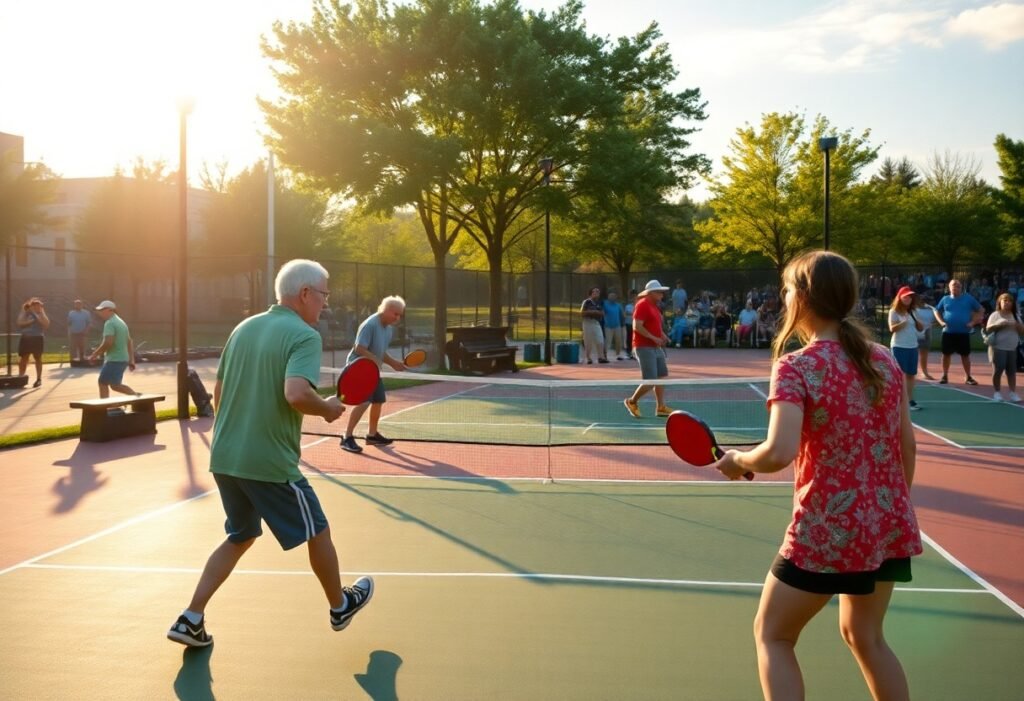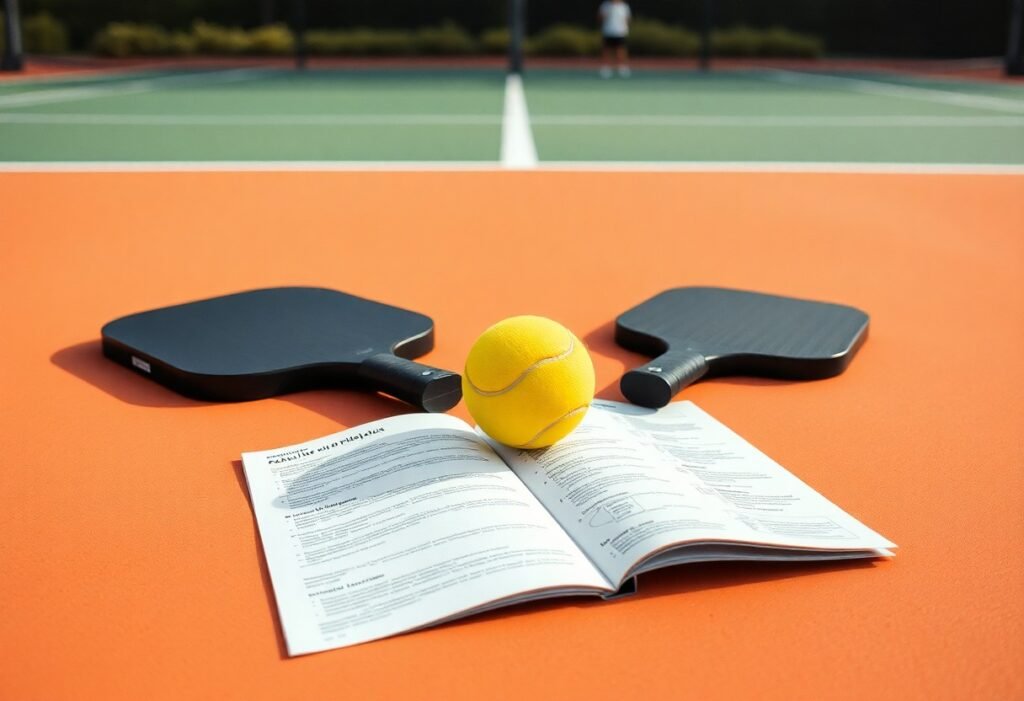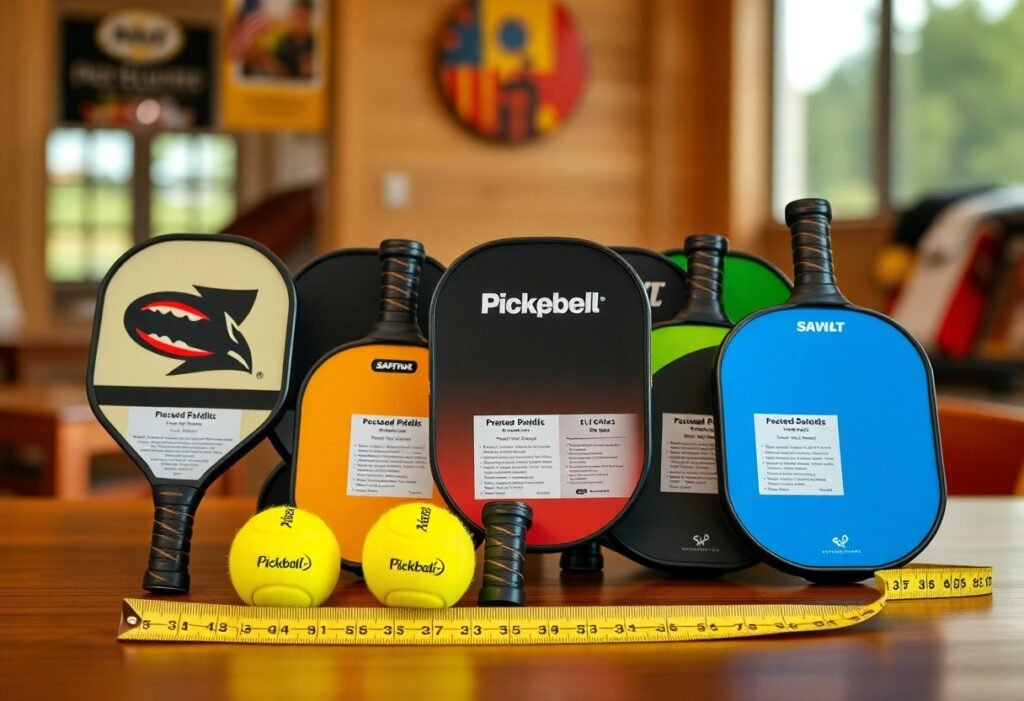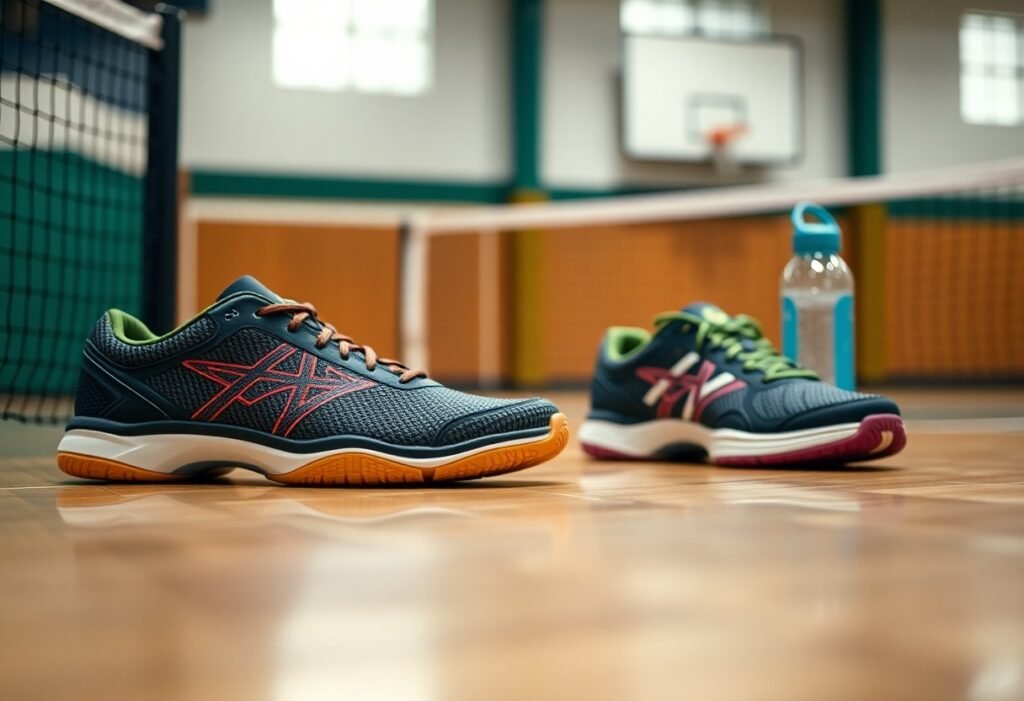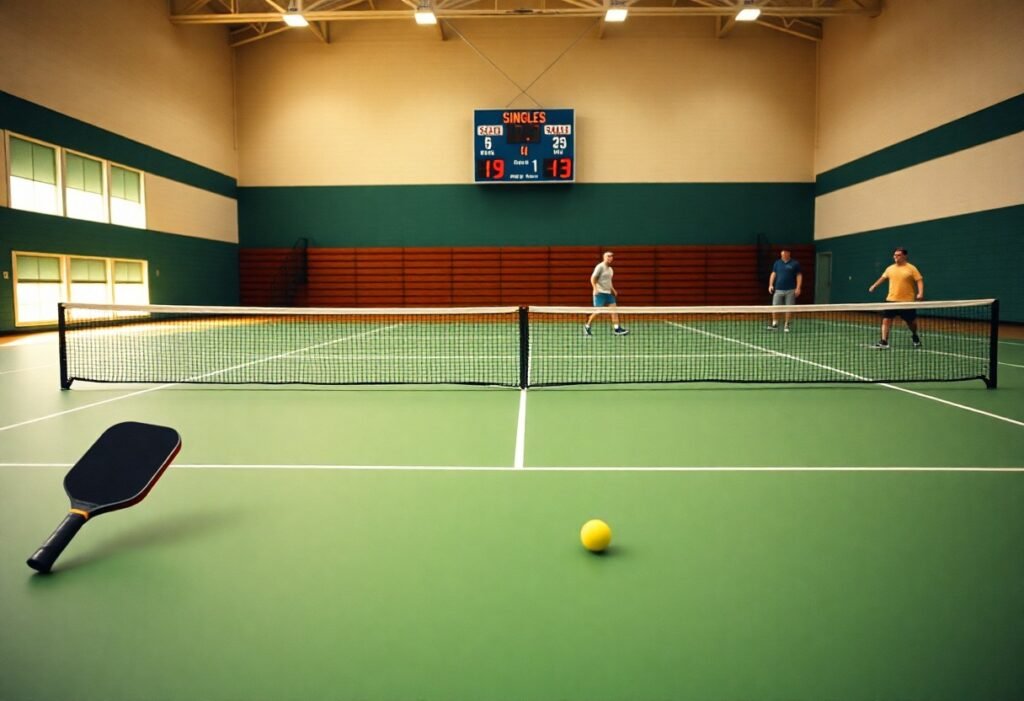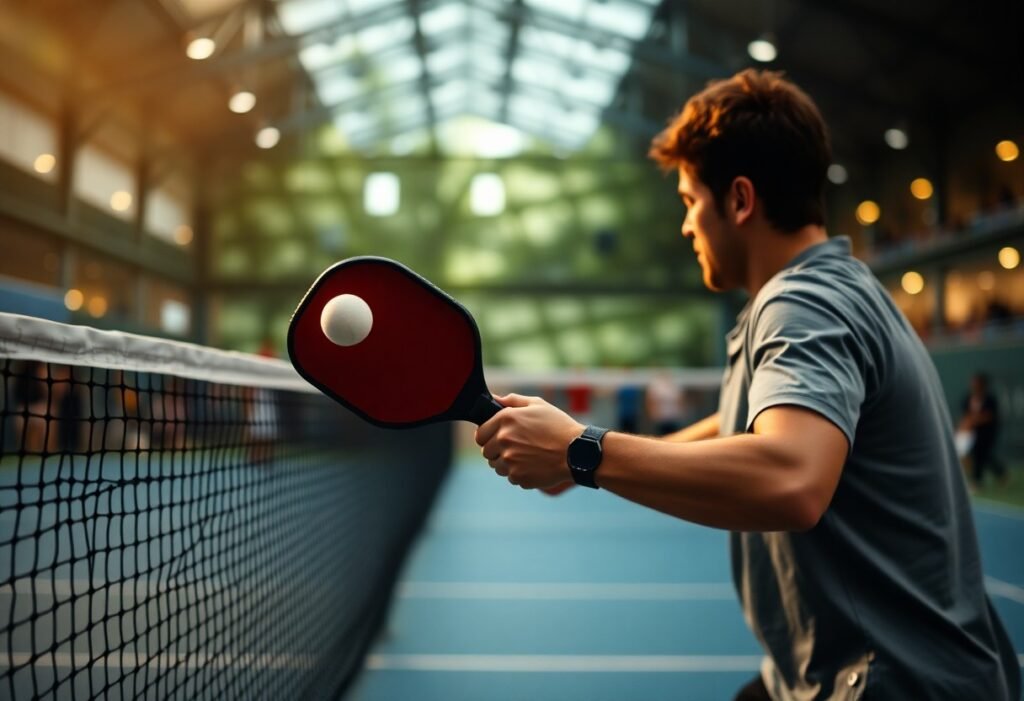Injuries can occur on the pickleball court if you’re not careful, impacting your enjoyment of this popular sport. Understanding the most common injuries will help you take proactive steps towards prevention, while also knowing how to recover effectively if they do happen. Prioritizing safety tips not only enhances your performance but also ensures you remain active and healthy in the game. This guide provides necessary information to keep you safe while playing pickleball.
Key Takeaways:
- Incorporate proper warm-ups and stretching to enhance flexibility and reduce the risk of injuries.
- Utilize appropriate footwear and equipment to support joint health and improve performance.
- Stay hydrated and maintain good nutrition to aid recovery and enhance overall physical condition.
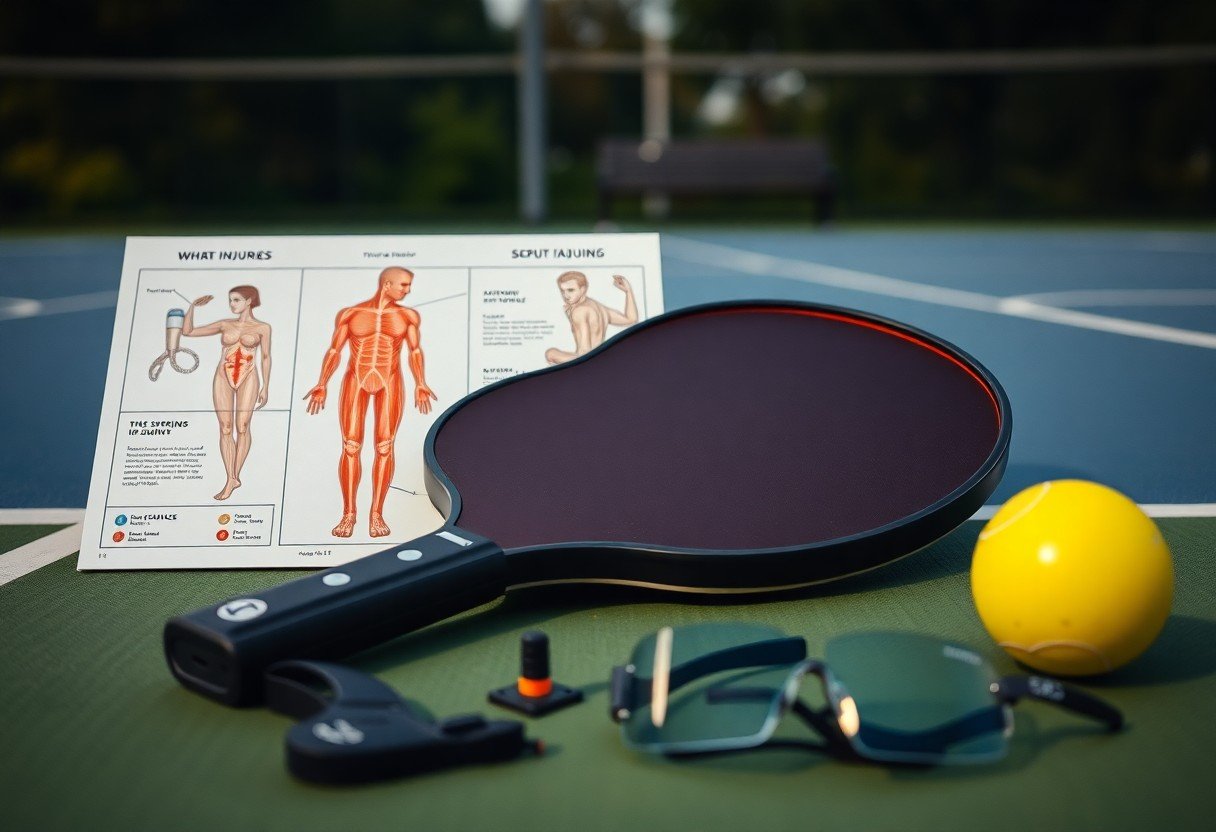
Understanding Pickleball Injuries
Common Types of Injuries
Injuries in pickleball can range from minor to severe, often affecting players’ performance and enjoyment. Sprains, strains, and tendinitis are common, primarily due to quick movements and directional changes. Additionally, shoulder injuries and ankle injuries frequently occur. Proper technique and warm-up routines can mitigate some risks.
| Injury Type | Description |
| Sprains | Injury to ligaments, often from twisting movements. |
| Strains | Injury to muscles or tendons, typically from overexertion. |
| Tendinitis | Inflammation of tendons, usually in the shoulder or elbow. |
| Shoulder Injuries | Pain or injury from repetitive overhead strokes. |
| Ankle Injuries | Twists and falls lead to sprains or fractures. |
Risk Factors for Injury
Certain factors increase the likelihood of injuries while playing pickleball. Increased age, lack of fitness, and inadequate stretching can all contribute to a higher risk of injury. Seamless, careful management of these factors is key.
- Age impacts recovery and resilience.
- Fitness Level is crucial in sustaining performance.
- Technique affects injury incidence.
- Equipment plays a role in injury prevention.
- Surface Type can influence injury risks.
Knowing these risk factors helps you tailor your training and prepares you for challenges specific to your body. By addressing your fitness, technique, and equipment, you can significantly reduce the chance of injury.
Impact of Age and Physical Condition
Your age and physical condition can play a significant role in your susceptibility to injuries in pickleball. As you age, your muscle strength, flexibility, and recovery speed may decline, which can lead to a higher risk of injuries. Players in excellent physical condition are typically more agile and less likely to sustain injuries compared to those who are less active.
Players over 50, for example, face increased risks due to natural physiological changes. Engaging in a proper warm-up routine and maintaining physical fitness helps counteract some age-related risks. Strengthening exercises, focused on core stability and endurance, can further enhance your performance and resilience against injuries.
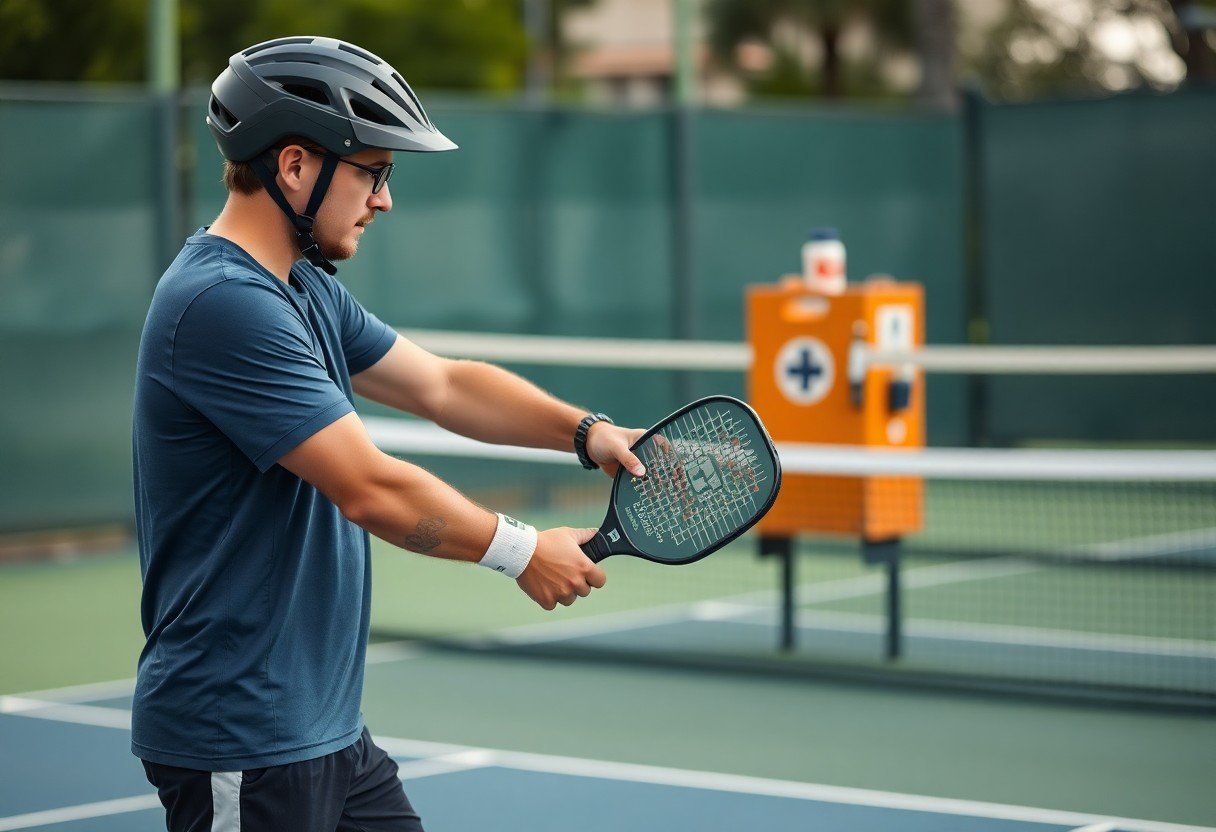
Prevention Strategies
Proper Warm-Up and Cool-Down Techniques
Incorporating proper warm-up and cool-down techniques is vital for your performance and injury prevention in pickleball. A thorough warm-up should include light aerobic activity followed by dynamic stretches, targeting all major muscle groups. Post-game, dedicate time to cool down with static stretches to enhance flexibility and promote recovery, minimizing soreness and stiffness.
Importance of Stretching and Flexibility
Stretching and maintaining flexibility are paramount for injury prevention and improved performance. Regular stretching routines can enhance your range of motion, enabling you to reach for shots more effectively. By staying flexible, you reduce the risk of strains and sprains during gameplay.
Focusing on dynamic stretching before matches ensures your muscles are ready for the explosive movements common in pickleball. Incorporating various stretches targeting your shoulders, hips, and legs will contribute to greater overall flexibility. This flexibility helps you execute quick lateral movements more safely, effectively reducing injury risk and enhancing your ability to play at higher levels.
Equipment Considerations
Choosing the right equipment significantly impacts your safety and performance on the court. Ensure that your pickleball paddle and shoes provide adequate support and grip to enhance your play while minimizing the risk of injuries. Opt for paddles that fit your style of play, and invest in high-quality, cushioned footwear designed specifically for court sports.
Pay attention to the type of paddle you use; lightweight paddles can improve maneuverability, while heavier options may provide more power. Additionally, make sure your shoes fit correctly and have non-marking soles to maintain traction. These equipment choices can help absorb impact, stabilize your body, and provide better control during fast-paced games.
Playing Surface and Court Maintenance
The condition of the playing surface is vital for injury prevention. Regular court maintenance ensures that surfaces are free of debris and water, which can lead to slips and falls. Consider the type of court material and its suitability for your playing style to optimize safety and performance.
Hard courts, for example, generally provide a fast surface but can increase the risk of joint injuries if not maintained properly. Regularly check for cracks and unevenness and address any issues promptly. If playing on outdoor courts, ensure proper drainage to prevent pooling. A well-maintained court framework not only enhances your gaming experience but significantly reduces the likelihood of serious injuries.
Safety Tips for Players
- Wear proper footwear that provides adequate support and grip.
- Use a paddle suited to your skill level for better control and injury prevention.
- Play on a well-maintained court to avoid trip hazards.
- Ensure proper lighting in the playing environment to enhance visibility.
- Stay aware of your surroundings to avoid collisions with other players.
Recognizing these safety tips can significantly reduce your risk of injury and enhance your overall playing experience.
Understanding Rules and Etiquette
Adhering to pickleball’s rules and etiquette is necessary for a positive playing environment. Familiarizing yourself with game rules ensures fair play, while solid etiquette—like calling your own faults and respecting opponents—fosters a respectful atmosphere. This mutual understanding enhances your gameplay and minimizes conflicts on the court.
Hydration and Nutrition for Performance
Your performance in pickleball is directly influenced by hydration and nutrition. Maintaining optimal hydration levels supports endurance, so drink water before, during, and after play. A balanced diet rich in carbohydrates and proteins fuels your energy levels and aids in recovery, allowing you to perform at your best.
Consider consuming electrolytes if you play for extended periods, as this helps replenish lost minerals and prevent cramping. Foods like bananas and energy bars can provide quick energy when needed. Establishing a hydration and nutrition plan tailored to your needs will keep you energized and focused throughout your games.
Mindfulness and Mental Preparedness
Being mentally prepared is as important as physical readiness in pickleball. Practicing mindfulness allows you to focus on the present moment during play, reducing anxiety and improving performance. Visualization techniques can also enhance confidence by helping you mentally rehearse plays and strategies before they happen.
Incorporating mindfulness practices, such as deep breathing or meditation, can help you stay calm under pressure and maintain composure during critical game moments. Being mentally sharp will not only improve your gameplay but also reduce the risk of mental fatigue or stress-related injuries.
Recovery from Pickleball Injuries
Immediate First Aid Responses
When an injury occurs on the court, applying immediate first aid is crucial. Start with the RICE method: Rest, Ice, Compression, and Elevation. Rest the injured area, apply ice for 20 minutes, use compression to reduce swelling, and keep the affected limb elevated. These steps help in minimizing pain and speeding up recovery. For detailed instructions, visit Pickleball Injury Prevention: Five Tips From Mount Sinai ….
Rehabilitation Programs
A well-structured rehabilitation program focuses on gradually restoring strength, flexibility, and mobility to the injured area. Programs often include physical therapy tailored specifically to pickleball movements and requirements, emphasizing safe return to the sport.
Comprehensive rehabilitation programs typically begin with passive range of motion exercises, followed by active stretching and strength training as you progress. Professional therapists may analyze your specific movements to prevent recurrence by building endurance and control. Monitoring progress and ensuring correct form is crucial; regular evaluations with your therapist ensure that your program adapts to your improvement and prepares you for a safe return to play.
Role of Rest and Recovery Time
Ensuring adequate rest and recovery time is vital for effective healing. Pushing through pain can lead to worsening injuries, which prolongs your time away from the game. Allow your body sufficient time to repair and rebuild tissues for optimal recovery.
Understanding that every injury demands a tailored recovery timeline is key. Factors such as age, fitness level, and the severity of the injury influence how quickly you can return. Listening to your body and recognizing its signals can significantly impact your long-term health and performance. Striking the right balance between activity and rest will promote better recovery outcomes and ultimately allow you to return to your favorite sport safely and stronger than before.

Special Considerations for Older Adults
Age-Related Injury Risks
As you age, muscle mass decreases and joint flexibility may decline, leading to a greater risk of injuries such as strains, sprains, and fractures in pickleball. Additionally, diminishing bone density increases susceptibility to serious injuries. Awareness of these risks helps you take proactive measures to minimize the likelihood of injury on the court.
Adaptations for Safe Play
To ensure a safe pickleball experience, make necessary adaptations such as using lighter paddles, modifying court positions, and incorporating lower-impact techniques. These adjustments can help you maintain performance while reducing stress on your body.
Utilizing lightweight paddles can significantly lessen arm and shoulder strain, while selecting strategic positions on the court can minimize sudden movements. Additionally, consider playing doubles instead of singles to reduce the overall physical demand, enhancing your ability to enjoy the game without overexertion.
Building Strength and Endurance
Strengthening your muscles and improving endurance is vital for sustaining your pickleball performance and reducing injury risk. A well-rounded fitness regimen that includes targeted exercises can help maintain physical health as you age.
Incorporate strength training exercises specifically for your lower body, core, and upper body into your routine. Focus on flexibility and balance through activities like yoga or Pilates, along with cardiovascular exercises such as walking or swimming. A balanced approach will not only help improve your on-court performance but also enhance your overall stability and agility, fostering a more enjoyable and safe pickleball experience.
Final Words
Considering all points, being proactive about your safety in pickleball is crucial for enjoying the game while minimizing injury risks. You should prioritize proper warm-ups, use appropriate gear, and stay aware of your body’s signals. Additionally, if you do face an injury, following effective recovery protocols can help you return to the court faster. By implementing these prevention and safety tips, you enhance your overall playing experience and can focus more on honing your skills and enjoying the game.
FAQ
Q: What are common pickleball injuries?
A: Common pickleball injuries include ankle sprains, knee injuries, shoulder strains, and tennis elbow.
Q: How can I prevent injuries while playing pickleball?
A: To prevent injuries, ensure proper warm-up and stretching, use appropriate footwear, stay hydrated, and play on appropriate surfaces.
Q: What should I do if I get injured during a game?
A: If injured, stop playing immediately, apply ice to the affected area, elevate it, and seek medical attention if necessary.
Q: How can I recover from a pickleball injury?
A: Recovery includes resting the injured area, following RICE (Rest, Ice, Compression, Elevation), doing prescribed rehabilitation exercises, and gradually returning to play.
Q: What safety tips should I follow while playing pickleball?
A: Safety tips include playing within your skill level, maintaining awareness of other players, using proper equipment, and avoiding overexertion.


